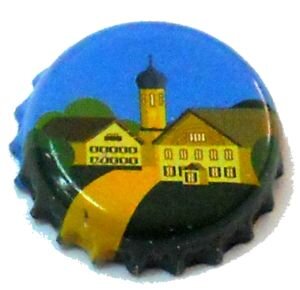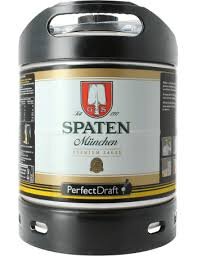Life in Duluth revolves around the lake. Whether you think it cheesy, inspirational, mundane or not; Lake Superior rules. The water is calming, refreshing and gives vitality. We drink the best water in the world (it’s our world) every day, so it’s not surprising that this city on the banks of Lake Superior has attracted Vikre Distillery (a lauded and award-winning company) to hand make its delicious spirits here.
The following recipes use Vikre Gin (you can sub with your favorite London-dry gin– but you should trust us and try Vikre), Lake Superior Water, and some terminology that you might not be used to or maybe you are. Either way let’s define some words so that we’re all on the same page.
Simple Syrup- Usually a 1:1 ratio of sugar and water. You can make Rich Syrup or Weak Syrup by altering the ratio in either direction. You can choose to flavor your simple syrup by adding vegetables, herbs, and botanicals.
Cordial- A more ‘advanced’ version of a simple syrup made by infusing water with flowers and/ or fruits. Cordial sits for longer than a simple syrup in the fridge and is then strained.
Coupe- A type of stemmed glass with a shallow bowl used for champagne, gimlets, martinis, etc.
Collins- A tall and narrow glass tumbler glass (think Mojitos).
High Ball- A short and stout glass tumbler (think Old Fashioned).
Sour- 1:1 ratio of Lemon Juice and Simple Syrup + Spirit.
Gimlet- 1:1 ratio of Lime Juice and Simple Syrup +Spirit (or Lime Cordial + Spirit).
Bitters- A pungent liquor that is made with botanicals and added to cocktails for enhancing its flavor profile.
Now that we have that covered we can focus on what’s really fun; making our ingredients and having the satisfaction of enjoying a home-made cocktail from scratch.
We’ll start with some simple syrups:
LAVENDER SYRUP
3 TBSP of Dried Lavender
1 C White Sugar
1 C Water
Bring your water and lavender to a soft boil and stir in your sugar. Once sugar is dissolved bring your syrup down to a simmer and stir for a couple minutes. Let your ingredients steep for 15 minutes off heat. Strain with cheese cloth or fine mesh. Allow the syrup to cool and keep it refrigerated.
GINGER SYRUP
1 C Roughly Cut Ginger (1/2 in- 3/4 in)
1 C White Sugar
1 C Water
Bring your water and ginger to a soft boil and stir in your sugar. Once sugar is dissolved, bring your syrup down to a simmer and stir for a couple of minutes. Let your ingredients steep for 15 minutes off heat. Strain with cheese cloth or fine mesh. If you want to get all of the ginger goodness, use a spoon to press on the softened ginger chunks. Allow the syrup to cool and keep it refrigerated.
BASIL SYRUP
1 C Loosely Packed Basil
1 C White Sugar
1 C Water
Bring your water and basil to a soft boil while stirring occasionally and slowly add in your sugar. Once sugar is dissolved bring your syrup down to a simmer and stir for a couple minutes. Let your ingredients steep for 15 minutes off heat. Strain with cheese cloth or fine mesh. Allow the syrup to cool and keep it refrigerated.
Now, what you do with these simple syrups is up to you. You can use them for baking, enhancing your tea, making flavored sodas or making cocktails at home. If you feel like shaking things up, we suggest some variations of sours and gimlets as a go-to for a refreshing evening. If kept in the fridge, your syrup will last about 2 months.
LAVENDER GIN SOUR
2 oz Vikre Juniper Gin
0.75 oz Lavender Syrup
0.75 oz Lemon Juice
Add the lemon juice, lavender syrup and gin to a shaker and fill with ice. You’ll want to vigorously shake your mix for about 10-15 seconds. Strain into a coupe and enjoy!
BASIL GIN SOUR
1.5 oz Vikre Juniper Gin
0.75 oz Basil Syrup
0.75 oz Lemon Juice
Add the lemon juice, basil syrup and gin to a shaker and fill with ice. You’ll want to vigorously shake your mix for about 10-15 seconds. Strain into a coupe and enjoy!
You can sub the Vikre Boreal Spruce Gin for this cocktail for extra citrus and bright notes.
SPRING’S IN THE AIR
1.5 oz Vikre Juniper Gin
0.25 oz Ginger Syrup
0.75 oz Lemon Juice
0.50 oz St. Germain (or sub for any Elderflower cordial)
Add the lemon juice, ginger syrup, St. Germain and gin to a shaker and fill with ice. You’ll want to vigorously shake your mix for about 10-15 seconds. Strain into a coupe, garnish with a lemon twist and enjoy!
And if coupes are not your style, these syrups lend themselves to make refreshing variations of a Tom Collins.
NOT YOUR AVERAGE TOM
0.75 oz Lemon Juice
0.75 oz Ginger Syrup
1.5 oz Vikre Boreal Juniper Gin
Soda Water
Add the lemon juice, ginger syrup and Juniper Gin to a shaker and fill with ice. Shake well and strain into a highball or Collins glass. Add ice cubes to the top and fill your glass with soda water. Garnish with a lemon wheel or wedge. Enjoy!















